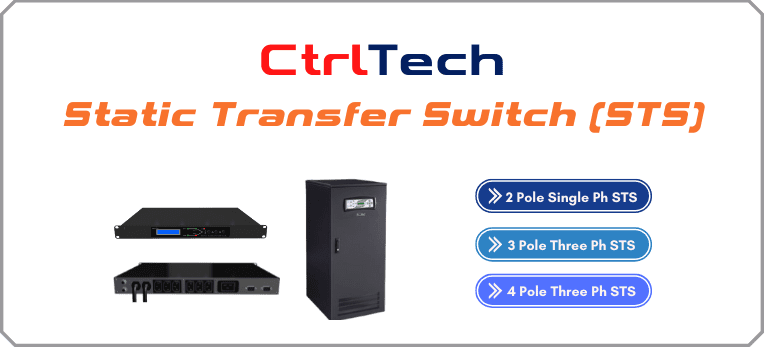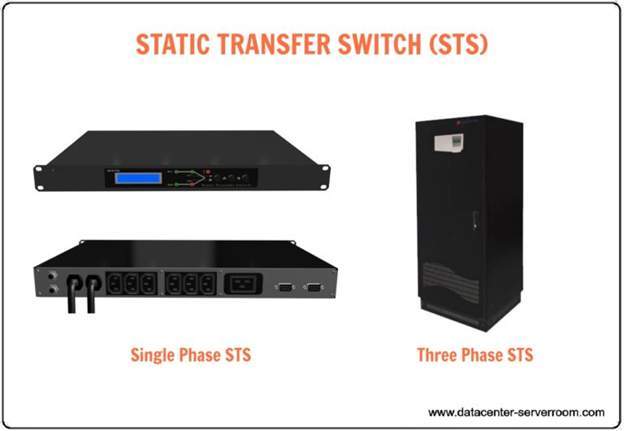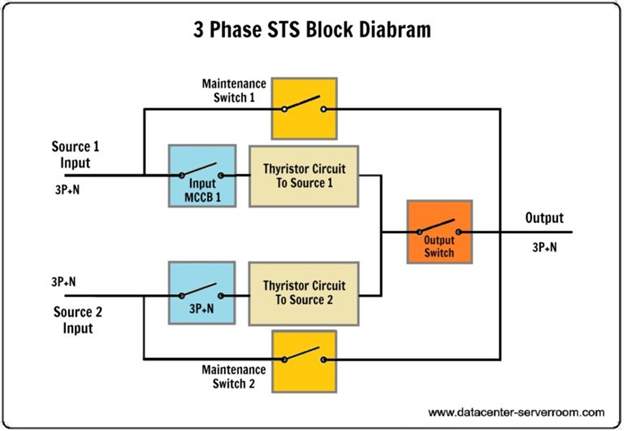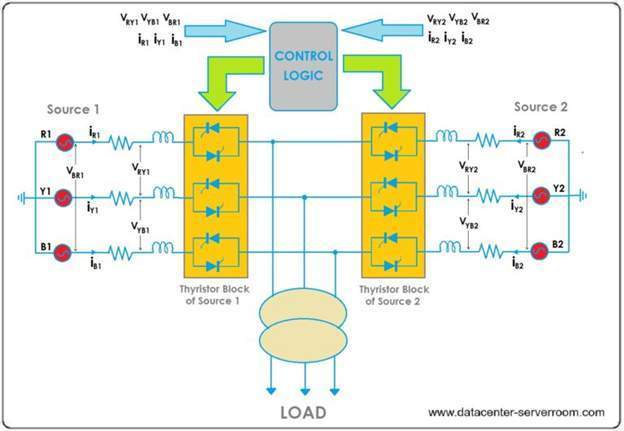There are numerous factors to consider when it comes to perforated ..
SKU: CT-STS-XP-XPL-XXXA
MPN: CT-STS-XP-XPL-XXXA
Category: Static Transfer Switch.
Along with increased power availability for key loads, STS deployment will give additional benefits such as

Static Transfer Switch(STS) is a static electric device, designed to automatically transfer charge to a standby power source connected to its input when there were an earlier disruption and to reverse without interrupting the server room charge. Static Transfer Switch(STS) It is completely static, as its name suggests, without any electromechanical components. Static Switch is capable of transporting load to the data centre within 1:4th of cycle time. The Static Transfer Shift consists of a combined thyristor anti-parallel in every phase. These thyristors are the thyristor turning off gate (GTO) which can be activated by the gate signal and by the gate signal negative polarity.


Through control Switch schematic is shown above. Both source has thyristor circuit with its own input MCCB and Maintenance bypass switch.
The transmission switch is made up of logic control, measuring circuit, thyristor circuit, disrupter and bus assembly. Controlling logic function, which controls both source and voltage continuously and provides a single gate for correction devices. The logic control constantly checks the voltage and current of the prepared source. If you don't like a preferential source or disruption, the logic checks the status of an alternative source and transfers loads to the source, which can provide power within the selectable boundary. If both sources are synchronised with phase errors within a maximum of 6 milliseconds automatic transfer can occur.

A static transfer switch transfers a load between two sources using power semiconductors such as silicon-controlled rectifiers (SCRs). Due to the absence of mechanical moving parts, the transfer can occur quickly, within a quarter-cycle of the power frequency. Static transfer switches can be used in situations where reliable and independent power sources are available and it is necessary to protect the load from even a few power frequency cycle interruptions, as well as from surges or sags in the primary power source.
The STS's purpose is to ensure that a critical load receives electrical power by switching between two relatively independent voltage sources. When it detects a disturbance, the STS automatically switches the primary feeder to an alternate feeder. The programmable switch detects brief power failures, interruptions, sags, and swells and automatically switches to the alternate source in as little as four milliseconds. The user is completely unaware of the switch's operation.
STS (Static Transfer Switch) is a type of automatic static switching equipment that is used to transfer critical loads between two independent alternating current power sources without interruption or in less than a cycle (20ms).
The STS is comprised of silicon controlled rectifiers (SCRs), control and sensing circuits that monitor incoming sources and transfer critical loads to the secondary source in the event of a primary source failure.
The NEC requires a transfer switch for any power connection to a residence. Truly, the only safe way to connect a generator directly to your home is via an ATS. A transfer switch automatically disconnects your home from the power lines. This eliminates back-feed, which occurs when electricity returns down utility lines. Not only can backfeed cause damage to the generator, but it also has the potential to start fires. Worse yet, back-feed could electrocute workers on power lines attempting to restore utility power, resulting in serious injury or death.
Not only is a transfer switch the safest and simplest way to connect a generator to your home, but it is also the most convenient. Extending extension cords to and from appliances can be inconvenient and time-consuming, even more so during a power outage. A transfer switch enables you to quickly and easily power any appliance in your home with your generator by utilising your home's wiring system. Additionally, some items, such as furnaces or well pumps, cannot be connected to a generator via an extension cord, necessitating the use of a transfer switch to power them during a utility power outage.
Static Switches are automatic two-way, three-phase, four-way switches.
Two independent synchronous or asynchronous alternating current power supply sources. SCRs are used as the switching device. Simultaneous current switching between the two sources is not possible under any operating conditions (Break Before Make).
This occurs when the power supply used to power the load fails or when performing test/maintenance.
One of the two power sources can be designated as the preferred source, to which the load will be transferred via the Static Switch. It remains there until different designations/faults necessitate switching to a different source. Two manual by-passes are provided on the Static Switch. Each source enables the system to be maintained properly. STS 4P 100(400-600) is a Static Switch with a block diagram, LED indicators, and a four-line, twenty-character display.
Capable of providing comprehensive information about the status of equipment operation. The priority selection button, in conjunction with the power source, enables operators to make full use of the apparatus.
Static Bypass switches are used to disable the UPS's normal operation in the event of a large inrush or a fault. Additionally, manual bypass switches allow for service and isolation for safety purposes. Correctly designed systems should enable these operations to be carried out without affecting the load's power supply. External maintenance bypass switches enable the UPS to be removed from site, provide local isolation, and allow for the completion of all ac cabling prior to the UPS delivery.
A Static Transfer Switch (STS) is a device that employs a static electronic component (SCR) that enables a transfer in less than four milliseconds (1/4 of an electrical cycle). In comparison, an Automatic Transfer Switch (ATS) is composed of moving parts and performs transfers substantially slower than Static Transfer Switches.
A Static Power Transfer Switch is composed of three fundamental components:
